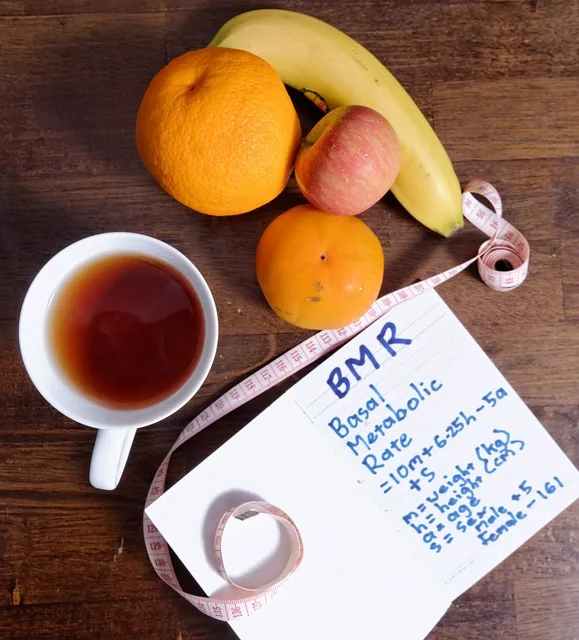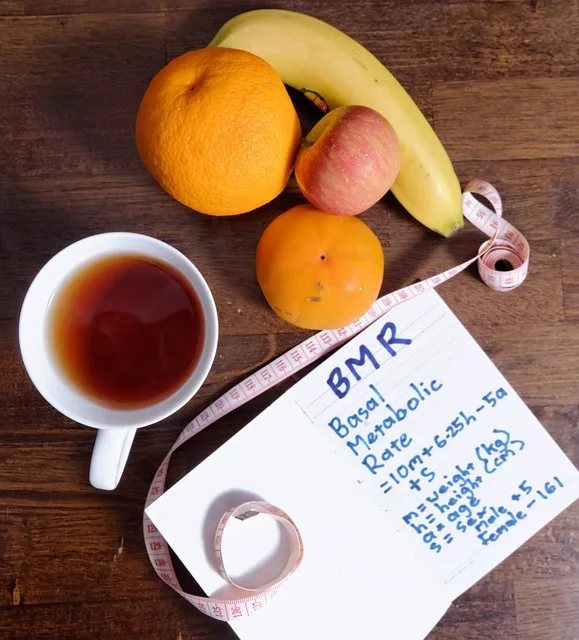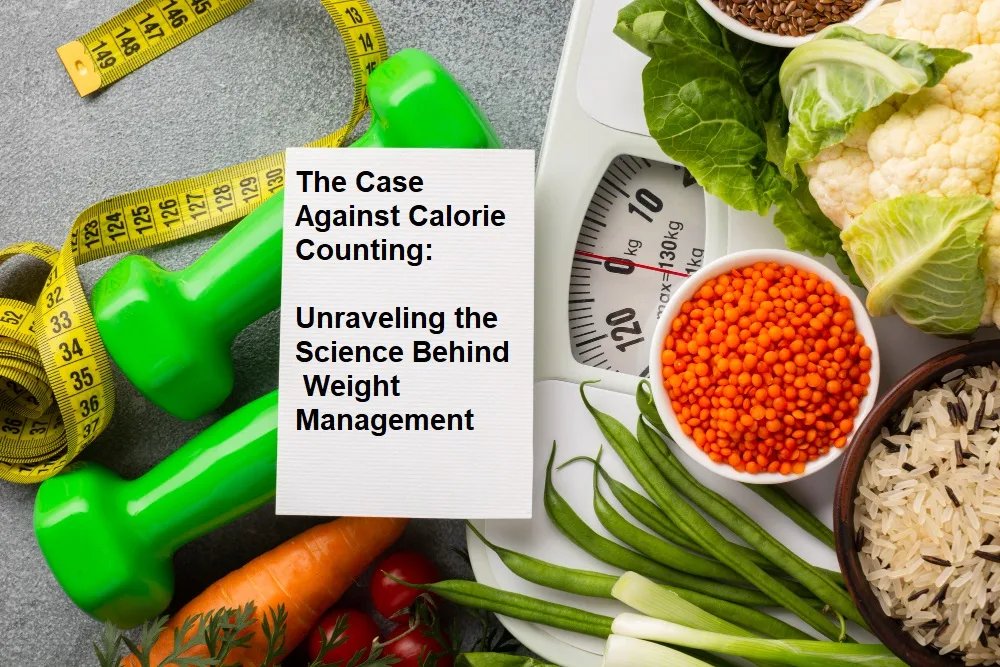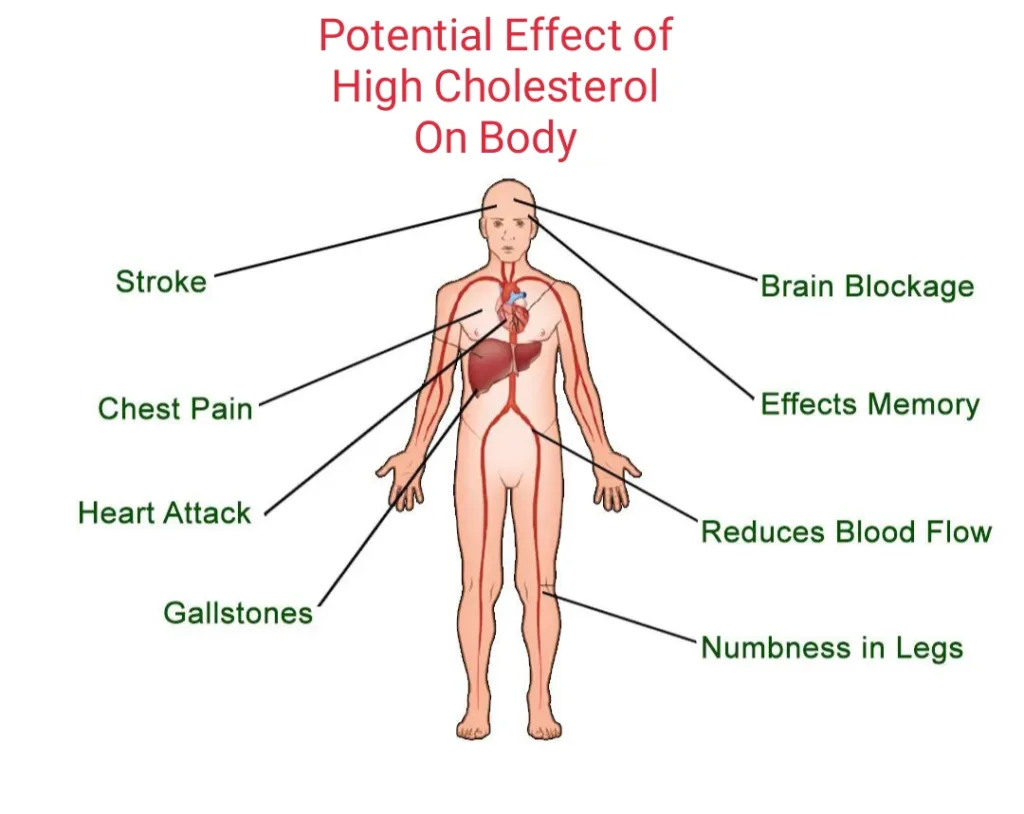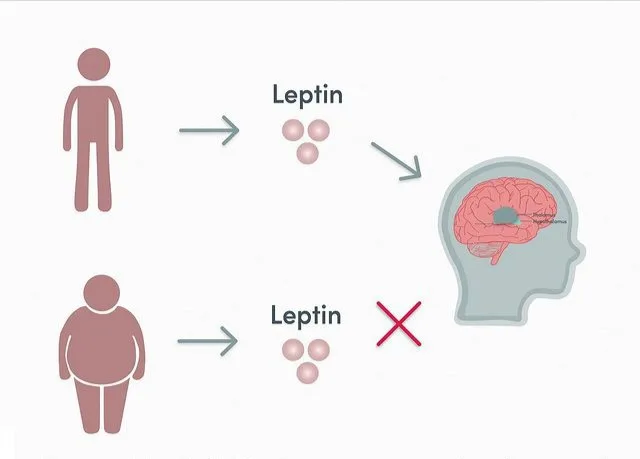The metabolism plays an essential role in many processes in your body, including digestion, nutrient absorption, drug metabolism, alcohol elimination, energy production, hormone regulation, and temperature regulation. Both catabolism and anabolism pathways are essential for maintaining the proper functioning of your body.
Understanding metabolism is key to maintaining a healthy lifestyle, and researchers continue to study the many ways’ metabolism impacts the human body.
Metabolism is something you can’t really see, it never stops. Whether you’re moving or at rest, metabolism constantly provides your body with the energy it needs to perform essential functions.
If they didn’t speak, they wouldn’t even be able to speak (because that also requires energy, you guessed it: metabolism!).
It’s also noted that, while you readily refer to the metabolic process as if it were a single function, it is actually a catch-all term for the countless functions that take place inside the body. Every second of every minute of every day of your life – even, of course, while you sleep – many chemical conversions are taking place through metabolism, or metabolic activity.
In a certain light, metabolism has been referred to as a harmonious process that manages to achieve two important physiological functions that, in a sense, seem to be at odds with each other.
What is Metabolism?
Metabolism is the process of turning food (such as nutrients) into fuel (such as energy). The body uses this energy to conduct a vast array of еѕѕеntіаl functions. 1
If you didn’t have a metabolism—that is, if you didn’t have a metabolic process that was converting food into energy—you wouldn’t be able to move.
In fact, before you realized that you could not move a finger or lift your leg, your internal process would have stopped; Because the basic building blocks of life—circulating blood, turning oxygen into carbon dioxide, excreting potentially lethal wastes through the kidneys, and so on—all depend on metabolism.
How does it work?
The set of chemical reactions allows the body to break down food into smaller molecules and use them as fuel for energy, to build and repair tissues, and to perform other essential functions.
Metabolism works through two main pathways:
- Catabolism
- Anabolism
Catabolism and Anabolism
Catabolic reactions control the breakdown of food to obtain energy, while anabolic reactions use the energy generated by catabolic reactions to synthesize larger molecules. Both catabolic and anabolic reactions are important for maintaining life.
Catabolism – the breaking down of molecules to obtain energy: The first task is to build tissue and cells. Every moment, our bodies are making more cells to replace dead or useless cells. It involves breaking down macronutrients (proteins, carbohydrates, and fats) into their simpler forms to provide the body with the basic building blocks needed for energy and growth.
For example, if you cut your finger, your body (if it’s functioning) will begin – without wasting a moment or asking your opinion – to make skin cells that have problems with blood clotting and healing. To start the process. This creation process is actually a metabolic reaction, and is called anabolic.
Anabolism – synthesis of all the compounds required by cells: this includes growth and repair, using energy that comes from our food.
In other parts of the body, just the opposite action takes place. Instead of building cells and tissues through metabolism, the body is breaking down energy, so the body can do what it is expected to do.
For example, as you exercise aerobically, your body temperature rises as your heart rate increases and stays within a certain range. As this happens, your body requires more oxygen; And as you take in more H2O, your breathlessness increases. All of this, as you can imagine, takes up extra energy.
Eventually, if your body couldn’t adjust to this increased need for oxygen (both to take it in and to get rid of it as carbon dioxide), you would collapse!
Of course, assuming you’re not overdoing it, your body will start turning food (like calories) into energy instead. And this process, as you know, is a metabolic process, and it’s called catabolism.
Bottom line: Most of the energy (calories) that we consume on a daily basis is used to operate catabolic and anabolic reactions in the body, while a small amount of energy (calories) is used by us to fuel activity.
The role of enzymes
Enzymes play an important role in metabolism. They are biological catalysts that speed up chemical reactions in the body by reducing the activation energy required for the reaction to occur. Enzymes are usually proteins that are specific for a particular reaction or set of reactions.
Metabolic pathways are often complex and involve multiple steps, each catalyzed by a different enzyme. Enzymes work by binding to specific substrates, or reactants, and converting them into products through a series of chemical reactions.
Enzymes can also be regulated by the body in different ways. For example, the body may produce more of a particular enzyme in response to increased demand for a particular metabolic pathway. Conversely, the body may reduce enzyme production in response to reduced demand. Some enzymes are also controlled by inhibitors or activators, which can increase or decrease their activity.
Without enzymes, many metabolic processes in the body would occur at a rate too slow to support life. Enzymes are therefore essential for maintaining the delicate balance of metabolic processes that keep the body functioning properly.
The importance of ATP
ATP (Adenosine triphosphate) is a molecule that plays an essential role in metabolism. It is often referred to as the “energy currency” of cells because it is used to store and transfer energy between cellular processes.
ATP is made up of three components:
- A nitrogenous base called adenine
- A sugar molecule called ribose
- Three phosphate groups
When one of the phosphate groups is removed from ATP, energy is released, and the molecule is converted to ADP (adenosine diphosphate).
The energy released from the breakdown of ATP is used to power cellular processes such as muscle contraction, protein synthesis, and cell division. When ATP is broken down, the energy released is used to do work within the cell, such as moving molecules across cell membranes, synthesizing new molecules, and generating electrical impulses in nerve cells.
ATP is constantly being broken down and regenerated in cells to provide the energy needed for cellular processes. This cycle of ATP breakdown and regeneration is known as the ATP cycle. The breakdown of ATP provides energy for cellular processes, while the regeneration of ATP restores the molecule to its original state and allows it to be used again in the future.
Therefore, ATP is an essential molecule for life, as it provides the energy needed to carry out all cellular processes. Without ATP, cells would not be able to perform the functions necessary for life and organisms would be unable to survive.
Factors that affect metabolism
Many factors affect your metabolism, and some of the most prominent are:
- Age: Your metabolic rate slows down as you age. This is because as you get older, your muscle mass decreases and muscle burns more calories than fat.
- Gender: Men generally have a higher metabolic rate than women. This is because men have more muscles than women.
- Body Composition: Your body composition, including the amount of muscle and fat you have, plays a significant role in determining your metabolic rate. Muscle tissue burns more calories than fat tissue.
- Hormones: Hormones such as thyroid hormone, insulin, and cortisol play an important role in regulating your metabolism. Any imbalance in these hormones can cause metabolic problems.
- Sleep: Getting enough sleep is essential for maintaining a healthy metabolism. Lack of sleep can lead to hormonal imbalance, which can slow down your metabolic rate.
- Diet: Your diet can affect your metabolism in many ways. For example, consuming protein-rich foods can increase your metabolic rate, because your body burns more calories digesting protein than it does digesting fat or carbohydrates.
- Physical activity: Physical activity is essential for maintaining a healthy metabolism. Regular exercise can help you build muscle, which can increase your metabolic rate.
- Genetics: Some people are genetically predisposed to have a slower metabolic rate than others.
- Medicines: Some medicines can impact your metabolism. For example, some antidepressants can slow down your metabolic rate.
- Environment: Your environment can also impact your metabolism. For example, exposure to cold temperatures can increase your metabolic rate as your body works to keep you warm.
Metabolism and weight management
Metabolism is vital in weight management, and an array of factors can affect metabolism and influence weight loss or gain. You may help your metabolism and reach your weight loss goals by concentrating on a balanced diet, frequent exercise, and other healthy lifestyle habits.
How it affects weight loss/gain
Understanding the elements that control metabolism allows you to adopt lifestyle choices that encourage a healthy metabolism and weight loss or maintenance.
Metabolism influences weight reduction and gain in a variety of ways. BMR, physical activity, nutrition, hormones, and sleep can all have an affect on your metabolism and thus your weight.
Your basal metabolic rate (BMR) is the number of calories your body burns at rest. Several factors influence this rate, including genetics, age, gender, body composition, and lifestyle.
Here’s how metabolism influences weight reduction and gain:
- BMR: The higher your BMR, the more calories you burn at rest, making weight loss simpler. Individuals with higher BMRs burn more calories even while sleeping or sitting. BMR is impacted by age, body size, and gender. Our BMR lowers as we age, and we burn less calories. Because men have more muscle mass than women, they have a higher BMR.
- Physical activity: Physical activity can assist boost BMR and aid weight loss. The more active you are, the more calories you burn and the more calories you may consume without gaining weight. Regular exercise also aids in the development of muscle, which burns more calories than fat.
- Diet: The type and amount of food you eat can also impact your metabolism. Eating a diet high in protein can help boost your metabolism because it requires more energy to digest than carbohydrates or fats. Eating too few calories can also slow down your metabolism, making it harder to lose weight.
- Hormones: Hormones play a crucial role in regulating metabolism. For example, thyroid hormones help regulate BMR. If you have an underactive thyroid, your BMR may slow down, making it harder to lose weight.
- Sleep: A lack of sleep can have a detrimental impact on your metabolism, resulting in weight gain. Sleep deprivation can cause hormonal changes, causing you to feel hungry even when you aren’t. Furthermore, when you’re tired, you’re less likely to be active and may overeat to compensate.
Myth-busting about metabolism and weight loss
Here are the common myths and facts about metabolism and weight loss:
- Myth: Eating spicy food speeds up metabolism.
- Fact: Eating spicy meals may provide a brief increase in metabolism, but this is insufficient to cause considerable weight loss.
- Myth: Skipping meals slows down your metabolism.
- Fact: Skipping meals may create a temporary slowdown in metabolism, but it is not a long-term weight-loss strategy. Indeed, skipping meals can lead to bingeing later in the day and weight gain.
- Myth: Drinking ice-cold water speeds up metabolism.
- Fact: Drinking cold water may enhance metabolism slightly, but not significantly enough to cause considerable weight reduction.
- Myth: Metabolism slows down with age.
- Fact: Metabolism slows with age, however this is primarily due to muscle mass loss, which is a natural component of the ageing process. You are able to retain a healthy weight by training regularly and eating a diet that is nutritious.
- Myth: Eating small, frequent meals boosts metabolism.
- Fact: Eating small, frequent meals can help with portion control, but it won’t boost metabolism or lead to weight loss.
- Myth: Some foods, such as celery or grapes, have negative calories.
- Fact: There are no such things as negative calorie foods. All foods contain calories, and the idea of negative calorie foods is a myth.
- Myth: The one and only thing that affects shedding pounds is metabolism.
- Fact: Metabolism is only one of many aspects that are associated with shedding pounds. Nutrition, exercise, sleep, stress, and genetics are also the factors.
- Myth: You can increase metabolism with supplements or quick fixes.
- Fact: There is no quick fix solution to increasing metabolism. Supplements and other quick fixes may have temporary effects, but they are not sustainable and can even be harmful.
Strategies for boosting metabolism
Making minor changes to your lifestyle and adopting these strategies into your routine will help boost your metabolism.
A faster metabolism can help you lose weight and keep it off if that is your goal, as well as provide you more energy.
Here are the 10 science-backed strategies for boosting metabolism:
- Lift weights: Strength training can help increase muscle mass, which is more metabolically active than fat. This means the more number of muscles you have, the more calories your body will burn during rest. 2
- Drink plenty of water: Staying hydrated is beneficial to overall health and can help boost metabolism. Drinking 500 ml of water increased metabolic rate by 30% for up to 30-40 minutes, according to one study. 3
- Eat more protein: Protein is an essential nutrient for muscle building and repair, and it has an even greater thermic effect than other macronutrients. This means that your body expends more calories digesting and metabolizing protein than carbs or fat. 4
- Eat regular meals: Skipping meals or going long periods without eating can slow down metabolism. Eating regular, balanced meals throughout the day can help keep metabolism humming along. 5
- Drink green tea: Green tea contains catechins, which have been shown to boost metabolism and aid fat loss. 6 7
- Get enough sleep: Lack of sleep can disrupt hormones that regulate metabolism, leading to slower metabolism and weight gain. Aim for 7-8 hours of sleep per night. 8 9
- Stand more: Sitting for long periods of time has been linked to slower metabolism and other health issues. Standing, walking, or doing other light activity throughout the day can help keep metabolism active. 10 11
- Try high-intensity interval training (HIIT): HIIT workouts are short, intense bursts of activity that have been shown to boost metabolism and burn calories even after the workout is over. 12 13
- Don’t crash diet: Severely restricting calories can slow down metabolism, making it harder to lose weight in the long run. Focus on making sustainable lifestyle changes instead. 14 15
- Manage stress: Chronic stress may trigger an increase in the hormone cortisol, that may lower metabolism and trigger weight gain. 16 17 Stress-reduction strategies such as meditation, yoga, or deep breathing can be beneficial.
Metabolism and health
Metabolism performs a crucial position in basic health as it’s far accountable for breaking down the food we consume and remodeling it into power that our body can use for various capabilities consisting of physical activity, digestion, and maintaining a healthful weight. However, certain metabolic disorders can negatively impact average fitness.
One such disorder is diabetes, that is characterized with the aid of high blood glucose tiers due to the frame’s incapability to supply or use insulin effectively. This can cause various complications such as cardiovascular sickness, kidney sickness, nerve damage, and eye harm.
Another metabolic sickness is metabolic syndrome, which is a cluster of situations that increase the danger of heart disease, stroke, and diabetes. Metabolic syndrome is recognized whilst a person has 3 or extra of the following situations: excessive blood stress, high blood sugar, extra frame fats around the waist, excessive triglyceride ranges, and coffee tiers of HDL (exact) cholesterol.
Metabolic syndrome is connected to insulin resistance, which is a situation in which the body is unable to apply insulin successfully to process glucose. Insulin resistance results in high blood sugar levels, that can increase the danger of developing type 2 diabetes. Insulin resistance also will increase the hazard of growing cardiovascular sickness by using inflicting harm to the lining of blood vessels and selling the formation of plaques.
The hyperlink between metabolism and cardiovascular health is a complex one. High degrees of low-density lipoprotein (LDL) cholesterol, generally known as “horrific” LDL cholesterol, can increase inside the arteries, main to atherosclerosis, a circumstance wherein the arteries come to be narrow and stiff. This can lessen blood flow to important organs, which include the coronary heart and mind, increasing the chance of coronary heart attacks and strokes.
In addition to high LDL levels of cholesterol, different elements that make contributions to cardiovascular disease risk include high blood stress, excessive triglyceride ranges, and weight problems. These factors are regularly part of metabolic syndrome, highlighting the crucial role that metabolism performs in preserving cardiovascular fitness.
Overall, preserving a healthful metabolism is vital for general health and reducing the chance of diverse metabolic problems, including diabetes and metabolic syndrome, and their associated complications, which includes cardiovascular disease. A healthy life-style, together with everyday physical interest, a balanced food plan, and maintaining a wholesome weight, can help sell a healthy metabolism and decrease the danger of metabolic issues.
Bottom line
Metabolism is a fundamental process that plays a critical role in general health and well-being. It entails the conversion of nutrients from the food we consume into electricity that is used by the frame for various functions. The two major pathways of metabolism are catabolism, which breaks down complicated compounds into simpler molecules, and anabolism, which promotes the formation of complicated metabolites.
Factors together with age, genetics, physical interest, and weight loss program can all impact metabolism. A healthful metabolism can assist preserve a wholesome weight, save you metabolic problems along with diabetes and metabolic syndrome, and guide cardiovascular health.
On the alternative hand, a gradual metabolism might also make contributions to weight advantage and an expanded hazard of metabolic disorders, while a quick metabolism may bring about issue gaining weight or muscle tissues.
In conclusion, metabolism is a crucial system for usual fitness and health. By knowledge how it works and taking steps to help a healthful metabolism, individuals can promote optimum fitness and decrease their risk of metabolic issues and associated fitness troubles.
- Sánchez López de Nava A, Raja A. “Physiology, Metabolism.” [Updated 2022 Sep 12]. In: StatPearls [Internet]. Treasure Island (FL): StatPearls Publishing; 2023 Jan-. Available from: https://www.ncbi.nlm.nih.gov/books/NBK546690.[↩]
- McPherron AC, Guo T, Bond ND, Gavrilova O. “Increasing muscle mass to improve metabolism.” Adipocyte. 2013 Apr 1;2(2):92-8. doi: 10.4161/adip.22500. PMID: 23805405; PMCID: PMC3661116.[↩]
- Vij VA, Joshi AS. “Effect of ‘water induced thermogenesis’ on body weight, body mass index and body composition of overweight subjects.” J Clin Diagn Res. 2013 Sep;7(9):1894-6. doi: 10.7860/JCDR/2013/5862.3344. Epub 2013 Sep 10. PMID: 24179891; PMCID: PMC3809630.[↩]
- Pesta DH, Samuel VT. “A high-protein diet for reducing body fat: mechanisms and possible caveats.” Nutr Metab (Lond). 2014 Nov 19;11(1):53. doi: 10.1186/1743-7075-11-53. PMID: 25489333; PMCID: PMC4258944.[↩]
- Lopez-Minguez J, Gómez-Abellán P, Garaulet M. “Timing of Breakfast, Lunch, and Dinner. Effects on Obesity and Metabolic Risk.” Nutrients. 2019 Nov 1;11(11):2624. doi: 10.3390/nu11112624. PMID: 31684003; PMCID: PMC6893547.[↩]
- Mousavi A, Vafa M, Neyestani T, Khamseh M, Hoseini F. The effects of green tea consumption on metabolic and anthropometric indices in patients with Type 2 diabetes. J Res Med Sci. 2013 Dec;18(12):1080-6. PMID: 24523800; PMCID: PMC3908530. Available from: https://www.ncbi.nlm.nih.gov/pmc/articles/PMC3908530.[↩]
- Hodgson AB, Randell RK, Jeukendrup AE. “The effect of green tea extract on fat oxidation at rest and during exercise: evidence of efficacy and proposed mechanisms.” Adv Nutr. 2013 Mar 1;4(2):129-40. doi: 10.3945/an.112.003269. PMID: 23493529; PMCID: PMC3649093.[↩]
- Sharma S, Kavuru M. “Sleep and metabolism: an overview.” Int J Endocrinol. 2010;2010:270832. doi: 10.1155/2010/270832. Epub 2010 Aug 2. PMID: 20811596; PMCID: PMC2929498.[↩]
- Papatriantafyllou E, Efthymiou D, Zoumbaneas E, Popescu CA, Vassilopoulou E. “Sleep Deprivation: Effects on Weight Loss and Weight Loss Maintenance.” Nutrients. 2022 Apr 8;14(8):1549. doi: 10.3390/nu14081549. PMID: 35458110; PMCID: PMC9031614.[↩]
- Yates T, Edwardson CL, Celis-Morales C, Biddle SJH, Bodicoat D, Davies MJ, Esliger D, Henson J, Kazi A, Khunti K, Sattar N, Sinclair AJ, Rowlands A, Velayudhan L, Zaccardi F, Gill JMR. “Metabolic Effects of Breaking Prolonged Sitting With Standing or Light Walking in Older South Asians and White Europeans: A Randomized Acute Study.” J Gerontol A Biol Sci Med Sci. 2020 Jan 1;75(1):139-146. doi: 10.1093/gerona/gly252. PMID: 30403772; PMCID: PMC6909896.[↩]
- Park JH, Moon JH, Kim HJ, Kong MH, Oh YH. “Sedentary Lifestyle: Overview of Updated Evidence of Potential Health Risks.” Korean J Fam Med. 2020 Nov;41(6):365-373. doi: 10.4082/kjfm.20.0165. Epub 2020 Nov 19. PMID: 33242381; PMCID: PMC7700832.[↩]
- Boutcher SH. “High-intensity intermittent exercise and fat loss.” J Obes. 2011;2011:868305. doi: 10.1155/2011/868305. Epub 2010 Nov 24. PMID: 21113312; PMCID: PMC2991639.[↩]
- Ito S. “High-intensity interval training for health benefits and care of cardiac diseases – The key to an efficient exercise protocol.” World J Cardiol. 2019 Jul 26;11(7):171-188. doi: 10.4330/wjc.v11.i7.171. PMID: 31565193; PMCID: PMC6763680.[↩]
- Hall KD, Kahan S. “Maintenance of Lost Weight and Long-Term Management of Obesity.” Med Clin North Am. 2018 Jan;102(1):183-197. doi: 10.1016/j.mcna.2017.08.012. PMID: 29156185; PMCID: PMC5764193.[↩]
- Redman LM, Ravussin E. “Caloric restriction in humans: impact on physiological, psychological, and behavioral outcomes.” Antioxid Redox Signal. 2011 Jan 15;14(2):275-87. doi: 10.1089/ars.2010.3253. Epub 2010 Aug 28. PMID: 20518700; PMCID: PMC3014770.[↩]
- van der Valk ES, Savas M, van Rossum EFC. Stress and Obesity: Are There More Susceptible Individuals? Curr Obes Rep. 2018 Jun;7(2):193-203. doi: 10.1007/s13679-018-0306-y. PMID: 29663153; PMCID: PMC5958156.[↩]
- Ranabir S, Reetu K. Stress and hormones. Indian J Endocrinol Metab. 2011 Jan;15(1):18-22. doi: 10.4103/2230-8210.77573. PMID: 21584161; PMCID: PMC3079864.[↩]




